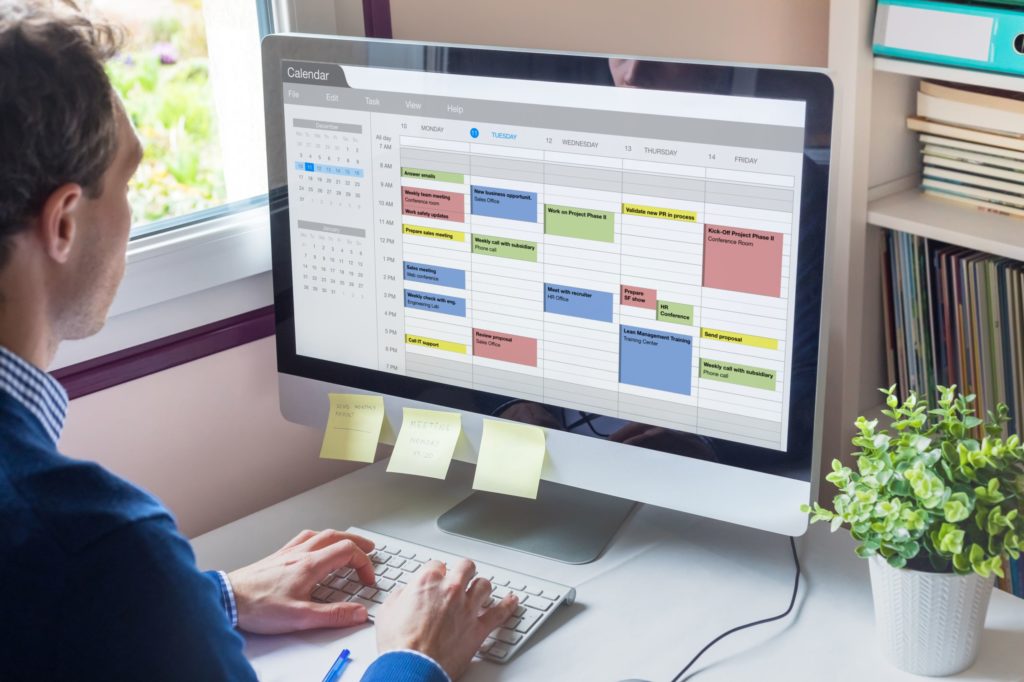 When you’re just starting out, your goal is to make a difference in the world. But to do that, you need to figure out how to grow your nonprofit.
When you’re just starting out, your goal is to make a difference in the world. But to do that, you need to figure out how to grow your nonprofit.
You’ve got so much to do as you launch your nonprofit. There are things like:
- An office to set up.
- Systems to put in place.
- A website to build.
- Money to raise.
- Social media to manage.
And about a hundred other things necessary to get your fledgling nonprofit up and running.
It can be tough when it’s just you to get it all done.
Until you can surround yourself with people who want to help, you’re going to be a team of one.
But take heart! MANY founders have started a nonprofit and successfully navigated their way through the startup phase, growing their organization successfully.
And you can, too!
There are two main things you must master now to grow your nonprofit quickly: systems and work habits.
When you have the right systems in place to support your nonprofit, and you personally practice effective work habits, you’re setting yourself up for a shorter learning curve and a smoother path later on.
And once you have those in place, you’ve created the backbone of your organization. Waiting to add volunteers or other help until those systems and work habits are in place will ensure that you’ve set the correct precedent for how things will be done in your nonprofit.
Cool, right?
Let’s look in detail at what it takes to get things done without working 24/7 or losing your sanity when you’re still figuring out how to grow your nonprofit.
Systems For How to Grow Your Nonprofit
Systems For How to Grow Your Nonprofit
Now, while your nonprofit is still young, is the perfect time to put operational systems in place, dot all your i’s, cross all your t’s, and make sure that your organization can sustain the growth when it happens!
The best and smartest thing you can do right now is to put key systems in place that any nonprofit needs to operate successfully.
In other words, don’t just think about what you need right now — think about what you’ll need when you grow to the next level. And the next.
You may not need some of these systems immediately, but trust me, when the time comes that you do need some of these, you’ll thank your lucky stars that you had them in place from the very beginning.
Accounting Software

It might feel premature to put accounting software into place when you’re just starting out. But it’s best to handle your finances right from the get-go. If you start out with Quickbooks or another high-quality accounting software and put the proper line items and accounts into place, it will save you or your bookkeeper hours and hours of stressful work later.
Many of our clients find this out the hard way when the time comes for comprehensive reports that they can’t get from their simple spreadsheets. Or it takes hours to pull together something that would be a simple click or two in the right accounting software.
Detailed financial reports are a must for several reasons. If you intend to apply for grants, you’ll need them for either planning the grant or as part of the grant application itself. You’ll need detailed lists of expenses and revenue when it comes time for budgeting for the next year. And financial breakdowns are helpful as you manage your finances each month, especially when funds are tight and you need to see exactly where every penny is going.
Don’t set yourself up for a major mess later. Start now, using an accounting software. You’ll be glad you did.
As you set up your accounting software, start thinking about how your bookkeeping tasks will get done, following best practices in accounting for nonprofits. Creating and documenting procedures may seem kind of silly when it’s just you, but again, putting these into place NOW makes them part of your organization’s operations and will save you from lots of headaches later.
The more you systematize things, the less time it takes to get tasks done. That’s important when you’re a team of one.
Donor Database
It doesn’t matter if you have just two donors, you need a database.
Donor databases like Little Green Light, Bloomerang, and Kindful do so much more than just track donations. You can create donation forms and pages for online donations, and this software tracks each donor as well as — allowing you to print or send customized thank-you letters, track your larger donors, and run comprehensive reports to track the performance of individual fundraising efforts so you can see what’s working.
You can customize a dashboard to show you at a glance how many donors you have, what your average donation amount is, and lots of other great information to help you manage and plan your fundraising activities.
The more you work on fundraising, the more names and data you’ll add into your donor software. And being able to easily and quickly get the information you need about donors or past activities will save you a lot of time in the long run.
Social Media & Website
 As part of figuring out how to grow your nonprofit, you’ll definitely want to set up Facebook and Instagram accounts for your nonprofit, even if you’re not very active on them yet.
As part of figuring out how to grow your nonprofit, you’ll definitely want to set up Facebook and Instagram accounts for your nonprofit, even if you’re not very active on them yet.
Grabbing your nonprofit’s name can keep someone else from getting it. Plus, it gives you a starting place for spreading the word about the work you do and growing your following. Facebook can grow relatively easily by just inviting your friends and family to follow your page and asking them to share with their friends too.
You’ll also need a simple, basic, and functioning website as quickly as you can. Many people will check you out online before they give or volunteer, so make sure your online presence represents you well. Your website should include contact information for the nonprofit and a working Donate button.
Your online presence doesn’t need to be perfect right now; it just needs to be functional. You can always update or improve these pages later, especially if you can find a good volunteer to delegate this to!
Both your social media accounts and website can be used to answer common questions that people have about your nonprofit, your services, or getting involved.
Networking & Contacts
In the nonprofit world, your success comes down to your connections. It’s all about who you know. So, it’s important that you take the time to meet and form relationships with people who can help advance your organization.
Think in terms of local politicians, business professionals, media contacts, and other influential community members who can either connect you with resources or with others who can help you.
This can be tough if you’re an introvert or if it feels somehow manipulative to get to know someone solely to see what they can do for you. Just remember that those who need your nonprofit’s programs and services are depending on you.
Your job is to connect with people who can help you fulfill your mission. The ones who are most likely to help you will be excited about the work you’re doing or going to do. As long as your intention is simply to introduce people to your mission and see if they’re interested in helping, it’s all good.
Make it a goal to either meet one new person or learn more about one of your contacts every day. That may seem like a lot, but just imagine the strong connections you’ll have in a month! It’s one of the best ways you can spend your time, and truly, it doesn’t take a ton of time for a short phone call with a contact.
Be sure to add all these folks you’re meeting to your donor database and track your interactions. You can make notes about your conversations and what people express interest in. You can even create your next step and document it in the software so you always know what’s next with each contact you make.
Managing relationships purposefully helps you broaden your reach into the community and find new supporters.
Volunteer Inquiry
 Volunteers are imperative to growing beyond your team of one.
Volunteers are imperative to growing beyond your team of one.
As you begin to meet new people and grow your connections, you’ll start bumping into individuals and groups who are interested in supporting your nonprofit by lending a hand — some way or another. And you’ll want to point these folks to your website to learn more about how they can help and volunteer.
You’ll save a lot of time if you set up a volunteer FAQ section AND a volunteer application on your website. Having both of these elements saves on the number of emails you need to respond to, phone calls to answer, or voicemails to return.
How? You may ask. Well…
For one, the volunteer FAQ section answers common questions that individuals or groups might have about volunteering at your nonprofit: what age do they need to be, what kinds of things you need help with, which days of the week can they volunteer, which hours of each day can they volunteer, and so on.
Then, for those individuals who are truly interested in volunteering, the website can direct them to complete the online volunteer application — which can:
-
- Capture their responses to the questions you need answered.
- Automatically save the responses (including name and contact info) somewhere you can easily access, like in your donor database or a Google Sheet.
- Customize a message telling folks, who are completing the application, that you’ll be in touch with them once you’ve had time to review their application and the nonprofit’s volunteer needs.
- Notify you via email when someone has completed a volunteer application so you’ll never miss out on someone being interested.
See how those two pieces — the volunteer FAQ section and online volunteer application — can cut back on you having to answer so many questions??
Remember: As a team of one, you’ll need to work smarter, not harder. That’s why systems are so important.
Work Habits
Work Habits
It’s not easy being a jack of all trades, but it’s necessary as you work out how to grow your nonprofit.
If you’re not careful, you can find yourself scattered over so many tasks that you’re not doing any of them very well or effectively.
And when that happens, nobody wins!
So, form some good work habits now in order to manage your workload, save your sanity, and put boundaries in place so you don’t work 24/7.
Below are a few ways you can do all of that.
Schedule
Keep a work calendar and update it so it’s always current. We like Google Calendar since you can see it on your computer or phone, and once you start building your team, you can share calendars. Plus, you can get GSuite for free as a nonprofit — with your calendar, email, documents, spreadsheets, and more interfacing very easily.
 Start filling your calendar by scheduling any important meetings or calls. Next, schedule time to work on important administrative tasks, marketing, and fundraising. Save personal tasks and errands for the end of the workday or the weekend so they don’t interrupt your day, leaving you as much time as possible to focus on your nonprofit.
Start filling your calendar by scheduling any important meetings or calls. Next, schedule time to work on important administrative tasks, marketing, and fundraising. Save personal tasks and errands for the end of the workday or the weekend so they don’t interrupt your day, leaving you as much time as possible to focus on your nonprofit.
There are lots of tricks to help you manage your calendar and your time. Some people find that designating certain days each week for the same tasks is helpful. For example, Wednesday is accounting day every week.
Others find that designated blocks during each day help them stay on track. For example, every day from 9am-11am is emailing/correspondence time.
Blocking time to get all your phone calls done at once can be really helpful, especially if you don’t love talking to people on the phone. And if you do love phone calls, having a block of time gives you a deadline for getting them completed so you don’t chitty-chat all day.
Your schedule will only be as effective as your self-discipline. So if you have admin time set up to return emails, do only that during that time. When you get on Facebook to post on your nonprofit’s page, don’t get distracted scrolling through your feed! The point is, stay on task or you’ll lose a lot of time.
You can also try using alarms and reminders to keep you focused if you need to. (In all transparency, I’m using a timer right now to help me get this article written!).
Set a Goal a Day
At the beginning of each week, lay out what you want to accomplish and set one main goal per day.
This goal can be simple, but it needs to be something that moves your nonprofit forward — like meeting someone who can be a corporate sponsor for your program, interviewing a potential volunteer, writing a fresh thank-you letter to use this month, or calling a donor to say thanks.
No matter how big or small, setting one goal a day will keep things interesting and provide you with a challenge.
Don’t Take on More Than You Can Handle
This sounds so easy, doesn’t it?
I know. It’s not.
And I’m being very realistic when I say this is a challenge that almost every founder encounters.
It’s hard to say no and it’s hard to walk away from something when you want to help. But it’s important to recognize your own limitations and practice self-care, too.
If you’re like the countless other nonprofit founders we’ve worked with, you’ll want to take on everything and sort out the details later.
But this rarely works out well for you.
And the more it happens, ultimately, it makes you less effective, it makes your work less impactfully, and it causes you to burn out – none of which are good when your main goal is how to grow a nonprofit.
Think of it this way. You love your organization, and your mission is very important to you. So doing it right should be equally important.
Taking on more than you can realistically handle is a great way to set yourself up for failure later. And if that happens, where will your organization be? Will you be able to help anyone if you’re burned out or if you’re not able to put forth your best efforts?
Probably not.
So be realistic about what you can take on personally and what programs or services you can realistically add to your nonprofit’s offerings.
Be the CEO of YOU
No section on work habits would be complete without discussing self care. And these days, it’s critical that you make sure you’re ready each morning to take on the day.
So, think about running your life like you’d run a company.
YOU’RE the CEO, and YOU’RE in charge of everything.
YOU decide what happens (or doesn’t happen) each day.
But what this also means in taking care of YOU.
 Make sure you get enough sleep. This one is wayyyy more important than it seems because your brain and body don’t function well if they aren’t rested.
Make sure you get enough sleep. This one is wayyyy more important than it seems because your brain and body don’t function well if they aren’t rested.
Eat properly. It’s easy when you’re busy to grab food on the go or skip meals, but that doesn’t serve you. The healthier you can eat, the more energy you’ll have to tackle the projects on your plate. Try to stay away from sugary snacks, especially in the mornings. This will help you avoid the afternoon sleepy sugar crashes.
Drink plenty of water. Staying hydrated helps combat fatigue, grumpiness, and sluggish brain syndrome. Coffee doesn’t count as water. Diet soda doesn’t count as water. And juice doesn’t either. Regardless of how many of these things you drink, don’t count them as water. A good rule of thumb is 64 ounces of water a day. Using a reusable water bottle makes this easy to measure how much you’ve had!
Take breaks during the day. Trying to power through to get as much done as possible might work for a single day, but not every day. Take a 5 minute walk if you can. Stretch your legs, stretch your mind a bit, and step outside of the work world if only for a moment.
I’m sure you’re getting the picture. If the founder is healthy, so is the organization.
Now I’m not saying that everything will be perfect every day. (Let’s be real, right?)
But what I am saying is this. A founder who makes their personal health and well-being a priority is a founder who is more efficient, more effective, and more capable than a founder who is burned out, exhausted, and depleted.
Turn “I” Into “We”
Turn “I” Into “We”
 One of the first things you’ll think about doing as you launch and grow your nonprofit is to recruit help so you can stop being a team of one.
One of the first things you’ll think about doing as you launch and grow your nonprofit is to recruit help so you can stop being a team of one.
Lots of founders start by letting as many volunteers as possible do whatever they can for the nonprofit. Usually, these are vague things like “raising awareness” or “running social media.” (I mean, after all, who can say ‘no’ to anyone who wants to lend a hand?)
Unfortunately, this strategy doesn’t work in the long run and leaves the founder starting back at square one because they didn’t get what they needed from the efforts and were disappointed with the results. This can be extremely frustrating, to say the least.
So what goes wrong in these situations? Essentially, the founders don’t take the time to define what their most immediate needs truly are.
To avoid doing this — and get what you need in order to grow from “I” to “We” — you must keep it simple and ask yourself what help do you need first?
Start by noticing what you don’t like doing, what you’re procrastinating on, and what stresses you out. These are the first things you need to get help with because they’re not your strengths.
Once you know what you need help with, decide what kind of help you need. Can a volunteer do the job? Or does it need the attention and skill of a professional? Be careful about using a volunteer to do critical tasks like bookkeeping and tax forms. They may not have the skills or time to do them right and meet any deadlines.
Outsourcing tasks to a virtual assistant or contract employee might be good options too if you have the funds to pay them. Even paying someone for a couple of hours a week to take some things off your plate can be a huge help since it frees up that time for you to work on other things.
The Bottom Line
The Bottom Line
Being a team of one is never a long-term solution.
The goal is to start with a solid foundation and grow from there.
Start by putting systems in place one at a time, developing good work habits, and being kind to yourself. Before you take on any projects or address new needs, ask yourself “Am I in a place where I can provide services I can be proud of?”
Staying true to your standards and your mission will always be your guide and will always serve you and your organization well from now on. And that’s how you grow your nonprofit so you can make a bigger difference in the world.






Thank you so much for this useful information, Aidan is my name, am the founder of David and Dianne foundation Uganda. We’re still new in this field but looking forward to learn more from here.
Have a look around – there are lots of good resources here on this site.